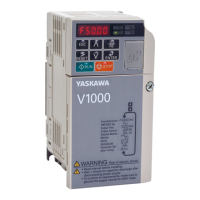(6) Allowance for lead error( 61, 6 2)
+x
1
tJ- #--
i
—
+Z
Fig. 2.20
61 and 6 zare obtained approximately from the
following equation.
Table 2.18
Equation
L (mm): Lead of thread
S(r/min): Spindle speed
K: Constent
(Normal value: 33)
a ( –): Accuracy of thread
_ AL. Lead error
—
1-
In: Natural logarithm
(Icg e)
a
1150 1/100
1/150 1/200
1/250 1/300
(ln~ – 1)
2.91 3.61
4.01
4.29 ; 4.52
4.70
EXAMPLE
Lead of thread L = 3.0 mm
Spindle speed
S = 500 rjrnin
Thread cutting a = 1/100
61>
62>
_3. ox 500
—
60.K
x3.61 =3. Omm
~=
3.0X500 =0 p,qmm
60. K
60. K “
2.8.16
MULTI -S,TART THREAD CUTTING (G 32)’
With
this function, multi–start threads containing
two or more threads per lead can be machined
without shifting the starting point. In thread
cutting, the tool feed is started in phase with a
start point pulse ( 1 pulse /revolution) generated
by a pulse generator installed on the spindle to
control the starting point of thread always at the
same position around the workpiece circumference.
With the multi-start thread cutting function,
after cutting a thread by controlling the starting
point by the starting point pulse, another thread
is cut by starting the cutting feed at an angular
position of the spindle which is displaced from
the starting pulse position by a preset angle.
(1)
(2)
LEAD
m
Two Start Thread
Fig. 2.21
G32 X((J) . . . Z(W) . . . F(E) . . . B.. . ;
With this command, the tool cuts a thread
starting at an angular position which is
displaced from the position corresponding
to the starting pulse by an angle specified
by B, to X(U) or Z(W) point, at a lead
specified by F Or E code.
The data specified by address B in the
multi–start thread cutting function is
as follows.
Least input increment: O. 001 deg.
Programmable range: O s B s 360.000
When decimal point input is used, B 1.=ldeg.
The B code is non-modal, and is effective
only in the programmed block.
41

